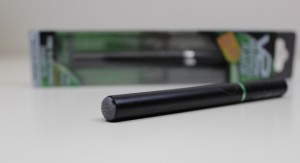My daughters’ Grade 6 class at school was fortunate enough to get a visit this past Friday from Constable Josée Mensales and her partner, François Landreville, of the SPVM youth risk prevention unit (the Section des enquêtes multidisciplinaires et coordination jeunesse ouest). The grade has been doing a whole awareness unit on drugs in anticipation of the upcoming transition to high school with their incredible teacher Stacey, and I’ve just been blown away by the depth and breadth of what she has taught them.
A brief aside here to illustrate how a little knowledge can be a dangerous thing: When Sophie overheard me muttering under my breadth that I was way overdue for my morning coffee, she clucked her tongue in dismay and informed that caffeine was a stimulant and incredibly addictive. She has no idea how true that is. I guess I’m lucky she hasn’t turned me in to the police…
But I digress.
Anyway, what I found so interesting about Constables Mensales’ and Landreville’s presentation is that the combination of their approachability, police uniforms and experience on the street really makes the kids sit up and listen. I’ve seen Josée at work several times through the Lester B. Pearson School Board‘s Partners in Prevention Risk Awareness nights (which is how I know her), and she is extremely good at capturing and sustaining the kids’ attention. I also love the fact that she is an extremely effective and well-informed female cop – what an important role model!
The group of Grade 6 kids in front of them was a particularly well informed group, and the presentation turned into a fast-paced dialogue with the students. She helped them place their learning in a more practical context — they may have learned a lot about crystal meth, but that’s apparently not a drug that turns up in Montreal. Better to learn about pot, heroin and Ecstasy, apparently.
Since they already knew a lot about different kinds of drugs and associated health risks, she spent time talking about peer pressure. They were particularly interested in her discussion of the difference between telling on a friend and being a snitch. If someone’s drug use can cause them harm, then telling on them (to a parent, a teacher, a guidance counsellor or other trusted adult) isn’t the same as tattletaling. You are telling to get them out of trouble, not to get them into trouble.
It’s a subtle distinction, but I think the kids really got it.
The other discussion that really resonated with this group of students, coming mostly from middle or upper middle class families, revolved around the legal consequences of drug use. She explained that most people think getting arrested under the age of 18 isn’t such a big deal, because your record gets erased. Wrong. While your criminal record may be wiped clean in terms of future charges, it’s still part of your background. If you want to be a police officer, a lawyer or one of many other professions, then your youth record will turn up in a background check, and you may not get the job. I saw the kids nodding their heads.
Plus, she reminded them, having a record means you can’t travel to the U.S. or many other countries, either with your family, your school trip or a sports team. The students looked shocked, imagining their families waving to them from the departure gate as they headed off to Florida without them.
Of course, the high point of the morning was when they opened up their demonstrator briefcase, showing a broad array of the drugs found on the streets on Montreal these days (sealed under plexiglass, for safety’s sake). Even the teachers were surprised to see Ecstasy tablets printed with the Calvin Klein logo, Mickey Mouse ears and Teenage Mutant Ninja Turtles. It’s all about branding, apparently.
This kind of multifaceted approach to risk prevention makes good sense, but it is both expensive and time-consuming, and clearly needs to be tailored to the specific needs of the school population. In this case, Constables Mensales and Landreville had 50 sets of interested ears. Of course, they are only 11 and 12 years old now, so they are willing to listen. It’s an entirely different story once they turn 13 and know everything on their own.
 Have you noticed people smoking e-cigarettes? They look like high-tech versions of conventional cigarettes, but there’s no smoke. People can put a variety of substances inside these slim electronic cartridges and inhale them as vapour. There is no smoke at all, so users commonly refer to it as “vaping” instead of smoking.
Have you noticed people smoking e-cigarettes? They look like high-tech versions of conventional cigarettes, but there’s no smoke. People can put a variety of substances inside these slim electronic cartridges and inhale them as vapour. There is no smoke at all, so users commonly refer to it as “vaping” instead of smoking.
